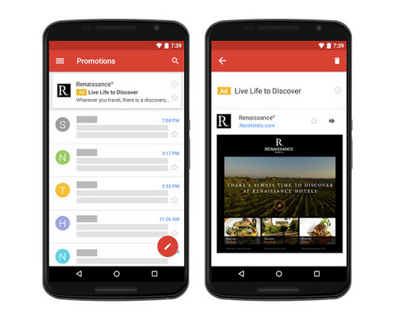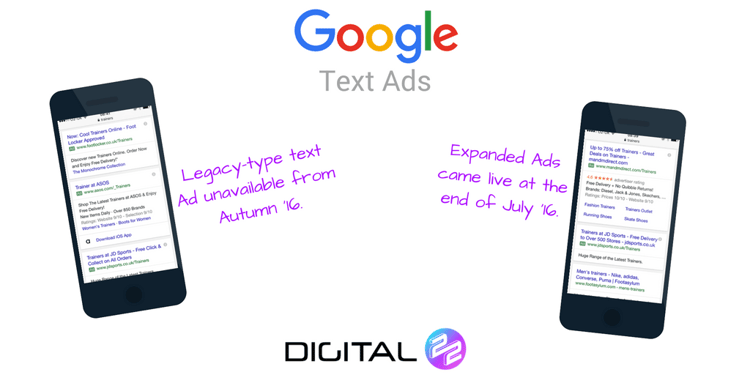As well as helping improve your return on investment, this technique also helps to improve your click-through-rate. The latter helps to increase your quality score and boost your long term SEO strategy. But it needs real consideration.

First Of All, What Is Display Network?
Google AdWords is split into two areas; Search Network and Display Network.
The Display Network covers pretty much the rest of the internet, or at least what AdWords touches anyway, and includes over 2 million websites, videos and apps. You can target certain users depending on their demographic, location or page they're viewing.
What Is Turning Off Display Network Placement Of Ads?
This technique involves turning off Display Network placing of ads in your AdWords settings when you create a campaign. This means that your Search Network optimised ad (presuming it is this kind of ad) will only show in search results and not be wasted by appearing on the Display Network.

Gmail Display Ads which appear to non-commercial users.
Not Everybody Does This
But there might be a couple of reasons why. Most probably to do with the fact that Display Network sites reportedly reach 90% of internet users worldwide.
Yes. We're suggesting to turn this off and we understand most businesses don't like doing so.
For example, some businesses might just want maximum exposure of their ads across all formats and not wish to narrow their options down. They also may not wish to spend time creating dedicated Search and Display optimised ads, respectively.
Another more simple reason, which is an opportunity for everyone else to get ahead, is that some less thorough PPC managers aren't aware they can do this.
How It Helps
Firstly, we recommend splitting your Search and Display placements anyway so that you can see your ROI for each more clearly. For most of our clients, Display ads have a poor ROI compared to Search ads, so after running the relevant tests we might switch it off.
Secondly, a Search optimised ad won't be appearing on the Display Network. If it does, the out-of-context format will most likely result in a drop in click-through-rate and this can harm your quality score.
This contributes to incrementally improving your quality score and is an example of how PPC campaigns can feed into helping your SEO, and then how the two work together to become part of a thorough inbound marketing strategy.

You can concentrate on solely targeting the Search Network. Did you know expanded text ads have been available since Summer 2016?
But It's Not For Everyone
Those who are looking to drill down into the extra-fine details of the PPC campaigns should undertake this technique. We also advise spending the time to produce a Display optimised ad and campaign. It's an advisable technique to try for those looking to shave extra savings off their PPC spend.
Similarly, it's best applied by businesses who operate within a very small niche and can contact their target persona very acutely within search results or email campaigns. You need to be confident that shutting off a wider range of potential visitors isn't going to harm your final numbers.
On the contrary, if you are trying to reach as many users as possible to spread brand awareness and aren't necessarily optimising for Search and Display Networks separately; you should avoid this technique.
That said, if this technique is a good idea for your business, it's probably going to remain an area of opportunity for some time. This is because you're in a particular niche and can exploit it to your advantage.
Get More Ways To Get Ahead
This is just one technique which we explained in our latest FREE eBook. Press the button below to open it and start reading over 50 pages of free content which will improve your inbound marketing.
Real Growth. Real Impact.
PAID MEDIA PODCAST — How to get the most out of your PPC budget
Paid Media Podcast Ep07 - PPC Upskilling - Yourself & Your Team
Running PPC In-House: Tips and Pitfalls | Paid Media Podcast Ep06
PAID MEDIA PODCAST: How much does PPC cost?
PAID MEDIA PODCAST: What does a paid social media manager do?
PAID MEDIA PODCAST: What does a PPC Manager do?
PAID MEDIA PODCAST: The alternatives to Google Ads
See why enterprises choose Avidly
Let’s build your HubSpot success story
Compelling final call to action - with accompanying link to Contact page








